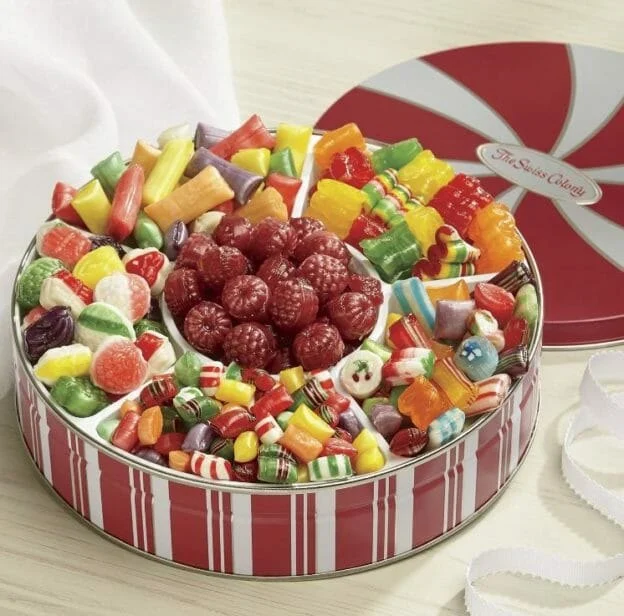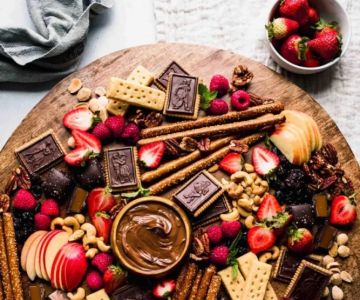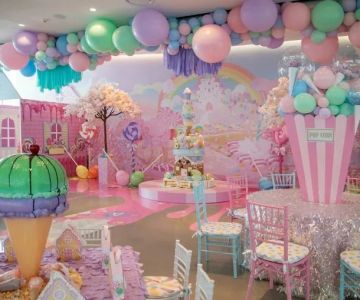
1. How Candy Shapes American Holiday Traditions
Candy has become a vital part of many American holidays, playing a significant role in shaping the way people celebrate throughout the year. From the sweet treats exchanged on Halloween to the sugary delights of Christmas and beyond, candy brings people together, enhances traditions, and adds sweetness to the festivities. In this article, we’ll explore how candy influences American holiday traditions, examining its historical significance, its cultural impact, and the way it continues to evolve in modern celebrations.
1.1 The History of Candy in American Holidays
The history of candy in American holidays goes back hundreds of years, with early settlers bringing traditional European sweets to the New World. Many of the candies we associate with holidays today, like chocolate and sugar candies, originated from recipes passed down through generations. Over time, these treats became integral parts of the way Americans celebrate special occasions.
Candy’s place in American holidays became particularly significant during the 19th century, when mass production and the industrialization of candy-making made sweets more affordable and accessible. Major holidays like Halloween and Christmas began to incorporate candy in new ways, from trick-or-treating to holiday gift-giving, making it a central part of the holiday experience.

MarieBelle / mariebelle chocolate
New YorkNew York CountyNew York
484 Broome St, New York, NY 10013, USA
1.2 Candy and Halloween: A Sweet Tradition
One of the most well-known and anticipated holidays associated with candy is Halloween. While the origins of Halloween date back to ancient Celtic traditions, it wasn’t until the early 20th century that trick-or-treating became popular in the United States, with candy playing a central role in the festivities. Today, Halloween has become synonymous with candy, and it is estimated that over 600 million pounds of candy are sold each year in the U.S. during the Halloween season.
The tradition of trick-or-treating, where children go door-to-door asking for candy, has become a fun and cherished part of American culture. Popular candy choices like chocolate bars, gummies, and candy corn have become staples of the holiday, and many families create fun, memorable experiences by sharing their favorite sweets with neighbors and friends.
1.3 Candy at Christmas Time: Sweetening the Season
Christmas is another holiday where candy plays an important role. From candy canes to gingerbread cookies, sweet treats are central to Christmas celebrations, offering both a decorative element and a tasty treat. The candy cane, for example, is a long-standing symbol of Christmas, with its distinctive red-and-white stripes and hook-shaped design representing the shepherd's crook. These treats are often used to decorate Christmas trees, stockings, and holiday tables, adding a festive touch to holiday décor.
In addition to candy canes, other popular holiday sweets include chocolate truffles, fudge, and sugar cookies. Many families also gift boxes of assorted candies during the holiday season, further cementing the connection between candy and holiday traditions.
1.4 Candy for Easter and Other Holidays
Beyond Halloween and Christmas, candy continues to play a role in many other American holidays, including Easter, Valentine's Day, and even Thanksgiving. Easter, for example, is celebrated with candy eggs, jelly beans, and chocolate bunnies, with many children eagerly anticipating their Easter baskets filled with sugary delights.
Valentine's Day is another holiday where candy plays a significant role, particularly in the form of heart-shaped chocolates and candy hearts. These sweet treats have become symbols of love and affection, often exchanged between partners, friends, and family members to show appreciation and care.
Even Thanksgiving, a holiday traditionally focused on food, includes candy as part of the festivities, whether it's in the form of candy yams or sweet treats served as part of the dessert spread.
1.5 How Candy Shapes Cultural Traditions
Candy isn’t just a treat; it is a cultural artifact that connects people to their shared experiences, memories, and traditions. Over the years, candy has evolved to reflect the changing tastes and preferences of society. The influence of candy in American holidays is also shaped by pop culture, advertising, and media, which create trends around specific candy brands and types during certain times of the year.
For instance, the introduction of new candy flavors or limited-edition holiday-themed treats can spark excitement and anticipation, leading people to create new traditions around these treats. Whether it’s the release of special Halloween candy bags or the anticipation of Valentine's Day chocolates, candy continues to inspire holiday-themed marketing campaigns that further embed these sweets into the cultural fabric of American celebrations.
1.6 Candy and Family Bonding
Aside from its role in holiday traditions, candy also serves as a medium for family bonding and creating lasting memories. Whether it’s decorating sugar cookies with family members during the holidays or sharing a box of chocolates during a birthday celebration, candy brings people together and helps to form traditions that are passed down through generations.
Many families have their own unique candy-related traditions, whether it’s making homemade fudge during the holidays or baking gingerbread houses together. These moments help families bond and create traditions that are cherished year after year.
1.7 Where to Find the Best Holiday Candy
If you’re looking for the perfect treats to make your holidays even sweeter, Gaia’s Candy offers a wide selection of delicious candies for every occasion. From Halloween favorites to Christmas specialties, their assortment of candy will help you create memorable experiences and enjoy the sweetest part of the season.
Visit Gaia’s Candy today to discover a variety of holiday-themed treats that will make your celebrations even more special!








 Third Avenue Chocolate Shoppe4.0 (108 reviews)
Third Avenue Chocolate Shoppe4.0 (108 reviews) Sugarfina4.0 (37 reviews)
Sugarfina4.0 (37 reviews) I LOVE SUGAR4.0 (1146 reviews)
I LOVE SUGAR4.0 (1146 reviews) IT'SUGAR Poughkeepsie0.0 (0 reviews)
IT'SUGAR Poughkeepsie0.0 (0 reviews) Norman Love Confections4.0 (430 reviews)
Norman Love Confections4.0 (430 reviews) Stowaway Sweets4.0 (88 reviews)
Stowaway Sweets4.0 (88 reviews) Top Candy Shops for Tourists in New York – Best Sweets and Treats
Top Candy Shops for Tourists in New York – Best Sweets and Treats Best Candy Shops in New York - A Sweet Adventure Through the City
Best Candy Shops in New York - A Sweet Adventure Through the City How to Make Candy-Themed Crafts for Christmas Gift Giving
How to Make Candy-Themed Crafts for Christmas Gift Giving How to Make Chocolate-Covered Strawberries for Kids: A Fun and Easy Recipe
How to Make Chocolate-Covered Strawberries for Kids: A Fun and Easy Recipe How to Make Easy Gummy Worms at Home | Homemade Candy Recipes
How to Make Easy Gummy Worms at Home | Homemade Candy Recipes How to Host a Candy-Themed Movie Night | Fun and Sweet Ideas
How to Host a Candy-Themed Movie Night | Fun and Sweet Ideas